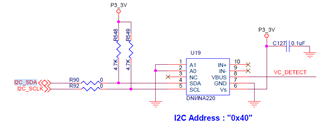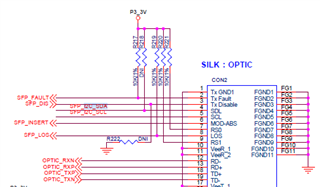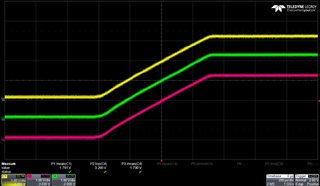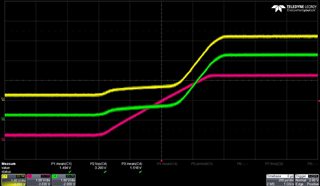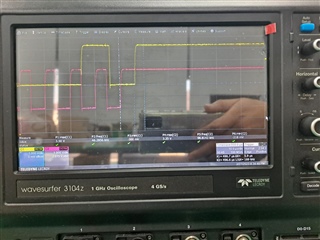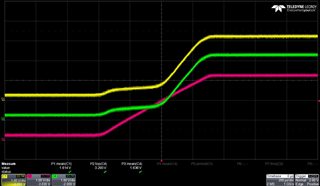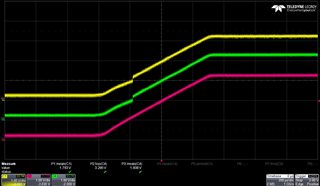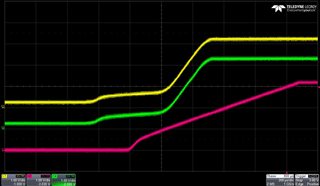Other Parts Discussed in Thread: INA220
Hello,
My customer had a problem that only the I2C communication of the LM75B was not possible when the I2C line of the LM75B and the SFP module were connected together.
If they remove the SFP module there is no problem. When the SFP module is mounted, I2C communication with the SFP module is normal, but the I2C communication of the LM75B is not working.
This symptom only occurs on some but not all LM75Bs.
1. Is there a waiting time for normal I2C communication after powering on the LM75B? If yes, what is the waiting time?
2. The captured I2C waveforms of the LM75B are as follows.
1) I2C start bit
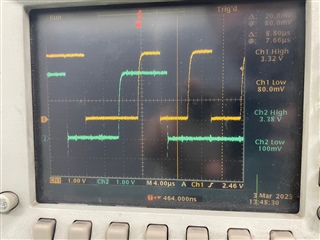
2) Normal
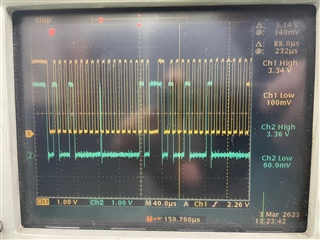
3) Abnormal

Looking at the waveform above, there is no ACK response from the I2C of the LM75B when it is abnormal.
Please advise on the cause of the problem and how to solve it.
Thank you.
JH



